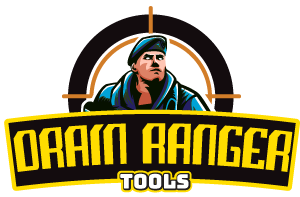
5 Common Issues You’ll Spot Faster with Modern Inspection Systems
Share
It’s not about getting a plumbing task done, but about doing it correctly on the first attempt. This is where the modern inspection systems come to play.
Modern inspection systems are effective in offering speed and consistency in plumbing operations. For instance, having a quality camera as a part of the pipe inspection system helps to detect leaks. The newer systems automate repetitive tasks, thereby reducing rework.
New-age tools help to find defects in a better manner. This leads to an improved service from the end of plumbing professionals, along with complying with related regulations. Using the latest systems accounts for happier customers. Otherwise, even the most obvious problems may remain undetected.
This blog discusses 5 common problems that modern inspection systems can detect quickly.
5 Problems Identified Quickly with Modern Inspection Systems
Different plumbing issues can hamper the overall sewage system. Hence, proper systems are needed to detect the issues before they create a huge problem. Here are the top issues that are identified quickly by modern inspection systems.

1. Pipe Blockage
|
Blockage type |
Camera/Tool type |
Key features |
|
Grease build-up |
HD drain camera |
High-resolution, LED lighting, and real-time video transmission |
|
Debris |
Push cameras and crawler cameras |
LED lights, a waterproof camera head, and real-time video transmission |
|
Foreign objects |
Video and locator system |
Long cable with length markers, high-resolution, and LED lights |
Table: Blockage Types and Recommended Camera Systems
2. Root Intrusion
Root intrusion is where roots acquire air, water, and nutrients by infiltrating the underground sewer system. This is a common plumbing issue that is identified during the inspection of the septic system. A key problem is that the existing leaks or cracks in the pipe are exploited by roots while exerting constant pressure.
How to understand this plumbing issue? Signs like slow drainage, structural damage, gurgling sounds, etc., indicate root intrusion. If this plumbing issue is ignored, it can result in costly repairs.
Sewer inspection cameras are quick to detect root intrusion. They capture HD videos of the pipe interiors in real-time during a sewer system inspection. The videos are interpreted by professional plumbers to find out the right approaches to solve the existing issues. A quick detection leads to removing the roots quickly.
3. Pipe Wearing
4. Cracked and Collapsed Pipes
Cracked or collapsed pipes might be seen during a sewage inspection. Shifting soil, corrosion, age-related deterioration, etc., cause pipes to collapse. This hampers the overall drainage system of a house.
5. Poor Pipe Installation
Need for Upgrading Inspection Gear
Mistakes Plumbers Need to Remain Aware of
Quick detection of plumbing issues might not happen if a plumber is not knowledgeable about every aspect. Here is the list of some common mistakes that must be avoided:
-
Improper Planning: Always make a foolproof plan before using any tool. Poor planning results in identifying a problem late, which usually spirals out of control.
-
Insufficient Training: Plumbers need to obtain adequate training before using any tool. Insufficient training accounts for failing to understand the exact reason behind any poor signs in the drainage system.
- Incorrect Equipment: There is a wide range of equipment that is used in sewer system inspection. Choosing the wrong one leads to undesirable outcomes.
To Conclude
Plumbing tasks are done effectively when the plumbers use top-quality tools. Issues, like pipe collapse, poor installation, wear, etc., are identified quickly by modern inspection systems. Plumbers must possess quality tools so that issues can be identified with higher precision.
Upgrading Your Tools
Having the right tool increases performance, along with boosting the confidence of a plumber. We offer a wide range of plumbing tools and sewer inspection cameras. Visit our site to fulfil your needs. This keeps you equipped while staying ahead of others.
